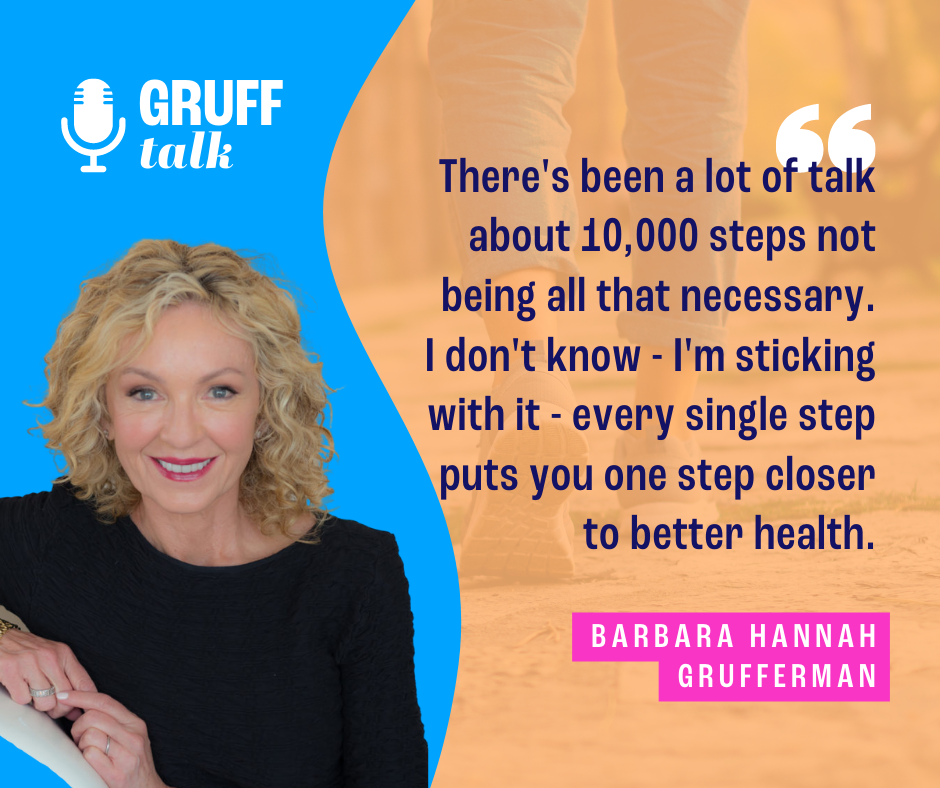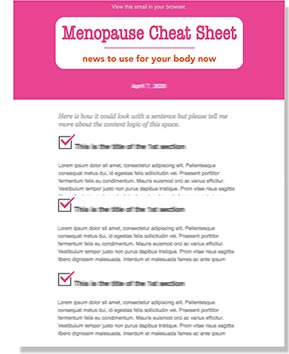LISTEN TO THE EPISODE HERE
As we age, visits to the doctor increase, testing increases, lab results get confusing, and researching health concerns on your own can make you check out with so much information available.
What are simpler and more reliable ways to measure your health to make sure you age better?
This is a question we got recently from a GRUFFtalk listener.
Today I’m answering a concern many of you have expressed and I’m sharing ten measurements that will help you age better and improve your health — if you keep tabs on them.
But before you learn more about ten measurements that matter, first I’ll give you three measurements you shouldn’t spend too much time thinking about.
Measurements to kiss goodbye:
- Age, because it doesn’t define you
- Weight, because how you feel, and your energy levels, matter more
- BMI, because its obsolete (listen to the episode to find out why — right here)
We’ve been bombarded with magazines, movies, and misinformation pointing to all of these measurements. Some of us have caused more damage than good focusing on these numbers. How many people do you know that have been stuck living by the number on the calendar?

10 Measurements Essential to Our Well-Being as We Age
Height: It’s normal to lose half inch of height per decade after 40, but you want to keep an eye on your height as an early indicator of bone loss or other bone related health concerns.
Waist size: Don’t let visceral fat get out of control. Your waist size is an indicator of many health issues that you want to avoid.
Waist-to-hip ratio: To calculate your ratio take your waist measurement and divide by your hip measurement. A good number to aim for is 0.85.
Daily steps: These are not off my list of measurements that matter. Aiming for 10,000 steps every day is good practice and makes sure you’re moving your body.
Blood pressure: Know what your numbers are and what the ideal numbers should be for you and keep an eye on that number to make sure you’re avoiding hypertension and hypotension.
Triglycerides: This number is a key indicator for potential cardiovascular disease. It’s a type of fat and you want to make sure you’re reviewing this number with your doctor.
Cholesterol: Know your cholesterol numbers. Making sure your numbers are under 200 (for women) is a good benchmark. But it’s also good to know the HDL and LDL numbers, too.
Resting heart rate: Between 60 and 100 beats per minute is considered to be normal, but getting your resting heart rate closer to 60 is better for optimal health.
Blood sugar glucose level: Metabolic disease is a major problem in America and blood sugar glucose levels are a key indicator for diabetes and your body’s ability to use sugar. The goal is under 50.
Vitamin D: The sunshine vitamin has a major role in bone health and osteoporosis. It also reduces the risk of other diseases and should be around 35.
LISTEN TO THE PODCAST BY CLICKING HERE
All the numbers I’ve mentioned are easily tracked, but it is important that you have the necessary conversations with your health care provider to discuss your personal health concerns and what your healthy ranges are. With new research being released all the time, it’s important to not feel overwhelmed, but know that you can still rely on these ten indicators to help you find your healthiest you.
Connect with Barbara:
Love Your Age: The Small-Step Solution to a Better, Longer, Happier Life
Barbara Hannah Grufferman website
Instagram @Barbara Hannah Grufferman
Facebook @BarbaraHannahGruffermanAuthor
































































